Burton’s mouthbreeder - Haplochromis burtoni
Scientific name: Haplochromis burtoni
Common name: Burton’s mouthbreeder
Family: Cichlidae
Usual size in fish tanks: 12 - 15 cm (4.72 - 5.91 inch)
014
Recommended pH range: 8.4 - 8.9
Recommended water hardness: 12 - 18°N (214.29 - 321.43ppm)
0°C 32°F30°C 86°F
Recommended temperature range: 20 - 25 °C (68 - 77°F)
The way how these fish reproduce: Spawning
Where the species comes from: Africa
Temperament to its own species: aggressive/territorial
Temperament toward other fish species: aggressive/territorial
Usual place in the tank: Middle levels
Origin
Burton’s mouthbrooder are found on the African continent where they are endemic to Lake Tanganyika.
Short description
Like most of the Haplochromis species, these fish prefer to live in large groups where a harem style existence takes place with the dominant males being the most brightly coloured and also the most aggressive when defending their territory. Adult specimens can be expected to reach an average length of up to 6 inches but they do require a lot of space in the aquarium so smaller tanks are not suitable.
Due to their aggression they are not ideal for novice fish keepers but with some experience they can be housed safely and make a good addition for cichlid keepers.
Lifespan
If cared for correctly the average lifespan for Burton’s mouthbrooder is expected to be between 5-8 years.
General care
As mentioned above these fish need a lot of space. Despite them not being the largest cichlid the minimum sized aquarium that should be used will need to be at least 4 feet (120cm) in length and 1 foot - 18 inches wide (30-45cm). Rock formations should be added to the rear of the aquarium with plenty of gaps to allow the fish to swim through. Sand should be used for the substrate and plants can be added if required which should not be nibbled on by these fish. All cichlids are high waste producers so use a filtration system that is rated for the water volume of the aquarium and back this up with regular water changes of at least 10% weekly. Always allow for open swimming spaces at the front of the aquarium as Burton’s mouthbrooder are very active and will need lots of space. It is always best to keep one male with several females, dominant males will fight to the death if they do not have the space to create their own territories.
Feeding
Burton’s mouthbrooders will accept cichlid pellets or a quality flake for the staple diet but they will require meaty foods to vary their diet and strengthen their immune system. In the wild they feed on crustaceans so chopped cockles or mussels are ideal. Chopped earthworms can also be offered as well as brine shrimp or blood worms.
Sexing
Mature males display a much brighter colouration when compared to mature females.
Breeding
As the name suggests they are a mouth brooding species. Dominant males will dig a pit in the substrate and entice the females over by displaying to them with quivering motions and flaring their gills. At this time any other male would be chased off with extreme aggression. One a female is receptive she will swim to the pit and deposit her eggs, an average batch would be 15-20 eggs with each spawning. The female will then attempt to pick up the eggs and at the same time be fooled by the egg spots on the anal fin of the male allowing him to fertilise the eggs in the female’s mouth. During incubation the female will hide away on the rockwork and not feed, during this period she should not be stressed or she will release the eggs early. Over a three week period the eggs will hatch and the female will contain the fry in her mouth until they are large enough to care for themselves. At any sign of danger the female will scoop the fry back into her mouth until the danger has passed.
Once free swimming the fry can be fed on newly hatched brine shrimp or infusoria until they are large enough to accept the same diet as the parent fish.

 Thread-finned
Thread-finned 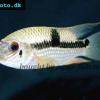 Acara
Acara  Yellow
Yellow  Patrick's
Patrick's  Blue
Blue  Green
Green 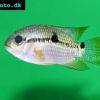 Acara
Acara  White
White  Compressed
Compressed 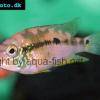 Pastel
Pastel  Midas
Midas  Red
Red  Bluemouth
Bluemouth  False
False 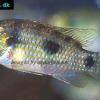 African
African  Agassiz's
Agassiz's  Banded
Banded 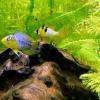 Yellow
Yellow  Cockatoo
Cockatoo  Blue
Blue  Blackstripe
Blackstripe  Highfin
Highfin  Redstripe
Redstripe  Threadfinned
Threadfinned  Macmaster’s
Macmaster’s 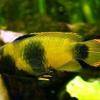 Panda
Panda  Norbert’s
Norbert’s 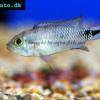 Blue
Blue  Thin-line
Thin-line  Three-striped
Three-striped  Viejita
Viejita 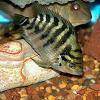 Flier
Flier  Archocentrus
Archocentrus  Convict
Convict  Seven
Seven  Spiny
Spiny  Oscar
Oscar  Sunshine
Sunshine  Chitande
Chitande  Firebird
Firebird  Midnight
Midnight  Lake
Lake  Sunshine
Sunshine  Aulonocara
Aulonocara  Nyasa
Nyasa 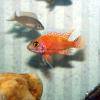 Ruby
Ruby  Grants
Grants  Aulonocranus
Aulonocranus  Chameleon
Chameleon  Benitochromis
Benitochromis  Orinoco
Orinoco  Yellow
Yellow 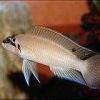 Brichard’s
Brichard’s  Guenther’s
Guenther’s  Southern
Southern  Cichla
Cichla 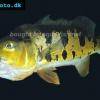 Peacock
Peacock  Chiseltooth
Chiseltooth  Bolivian
Bolivian  Red
Red  Many-pointed
Many-pointed  Jack
Jack  Red
Red  Three
Three 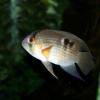 Keyhole
Keyhole  Azureus
Azureus  Red
Red  Jackson’s
Jackson’s  Crenicichla
Crenicichla  Honduran
Honduran  Blue-eye
Blue-eye  Afra
Afra 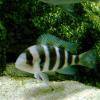 Frontosa
Frontosa  Slender
Slender  Malawi
Malawi  Chequerboard
Chequerboard  Checkerboard
Checkerboard  Malawi
Malawi  Ectodus
Ectodus  Tanganyika
Tanganyika  Canara
Canara  Green
Green  Rostratus
Rostratus  Pearl
Pearl 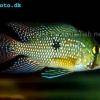 Geophagus
Geophagus  Yellowhump
Yellowhump  Suriname
Suriname  Redhump
Redhump  Red
Red  Dority’s
Dority’s  Argentine
Argentine  Victoria
Victoria 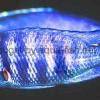 Haplochromis
Haplochromis  Jewel
Jewel  Banded
Banded 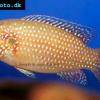 Lifalili
Lifalili  Lowland
Lowland  Texas
Texas  Pantano
Pantano  Severum
Severum  Banded
Banded 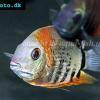 Severum
Severum  Rainbow
Rainbow  Parrot
Parrot  Chocolate
Chocolate  Brown
Brown  Marlieri
Marlieri  Golden
Golden  Striped
Striped  Masked
Masked 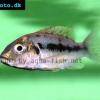 Konye
Konye  Blue
Blue  Trewavas
Trewavas  Electric
Electric  Dwarf
Dwarf  Redbreast
Redbreast  Lamprologus
Lamprologus  Gold
Gold 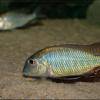 Greenface
Greenface 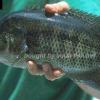 Mayan
Mayan  Aurora
Aurora  Blue
Blue  William’s
William’s 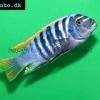 Zebra
Zebra  Malawi
Malawi  Blue
Blue 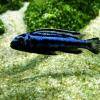 Blue
Blue  Mbuna
Mbuna  Parallel
Parallel  Purple
Purple  Flag
Flag  Bolivian
Bolivian  Ram
Ram  Basket
Basket 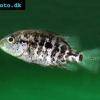 Haitian
Haitian  Zebra
Zebra  Striped
Striped  Neolamprologus
Neolamprologus  Brevis
Brevis  Fairy
Fairy 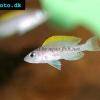 Neolamprologus
Neolamprologus  Cylindricus
Cylindricus  Hecq’s
Hecq’s  Neolamprologus
Neolamprologus  Lemon
Lemon  Mustax
Mustax  Daffodil
Daffodil  Six-bar
Six-bar  Five-bar
Five-bar  Marbled
Marbled 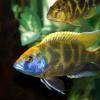 Giraffe
Giraffe  Blue
Blue  Sulphurhead
Sulphurhead  Wolf
Wolf  Jaguar
Jaguar  Blue
Blue  Marakeli
Marakeli  Madagascar
Madagascar  Pinstripe
Pinstripe  Pelmatochromis
Pelmatochromis  Kribensis
Kribensis 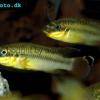 Striped
Striped  Red
Red  Deepwater
Deepwater  Fenestratus
Fenestratus  Nichols’
Nichols’  Southern
Southern  Bumble
Bumble  Demason’s
Demason’s  Slender
Slender  Red
Red  Mbuna
Mbuna  Malawi
Malawi  Kenyi
Kenyi  Powder
Powder  Altum
Altum  Angelfish
Angelfish  Angelfish
Angelfish 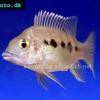 East
East  Juba
Juba  Earth
Earth 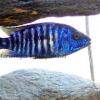 Electric
Electric  Azure
Azure  Lionhead
Lionhead  Discus
Discus  Blue
Blue  Red
Red  Zebra
Zebra  Brichard’s
Brichard’s  Blue
Blue  Firemouth
Firemouth  Zebra
Zebra  Yellow
Yellow  Blue
Blue  Dwarf
Dwarf  Blunthead
Blunthead 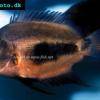 The
The  White
White  Twoband
Twoband  Fenestratus
Fenestratus  Window
Window  Tailbar
Tailbar  Black
Black  Redhead
Redhead 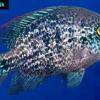 Oaxaca
Oaxaca  Xenotilapia
Xenotilapia